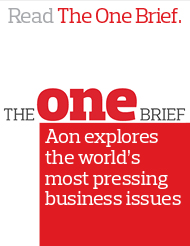Understanding Financial Wellbeing at Work
Stress caused by financial pressure can have a profound impact on employees’ emotional and physical health, leading to poor engagement and reduced performance at work.
This makes it crucial to incorporate financial wellbeing into employee wellbeing strategies, starting with understanding employees’ financial challenges and building self-awareness about their behaviour and attitudes to money.
Snapshot
- Financial stress can impact anyone, even employees on a high salary or with significant savings.
- Understanding employees’ financial challenges and behaviour is essential to delivering effective, tailored support.
- Financial wellbeing programs need to be inclusive and offer consistent value to all employees while being sensitive to cultural nuances.
Financial wellbeing means being able to meet current and ongoing obligations, feeling secure about one’s financial future and having the freedom to enjoy a decent quality of life - and there is a strong correlation between financial wellbeing and mental health risk. Key character traits that enhance financial wellbeing include resilience, which helps individuals manage stress and bounce back from challenges; self-esteem, which correlates with financial preparedness; and a positive outlook on life, which fosters financial readiness.
Financial stress can affect anyone, regardless of how much they earn or how prepared they are, and stressors like economic volatility, real or perceived job insecurity and rising medical and living costs can contribute to poor financial wellbeing, which can negatively impact employee morale and job satisfaction1.
Paul Gordon, head of financial wellbeing, Asia Pacific at Aon says, "Every time we deliver a financial wellbeing program to one of our global clients, more than 80% of participants openly report having some level of financial stress – and fewer than 15% say they feel financially content”.
A study by Aon and TELUS Health also reveals that, among Asia’s working population, 34% do not have emergency savings and say their financial wellbeing has a significant impact on their mental health. The study also found that employees without emergency savings are 60% more likely to have difficulty concentrating at work compared to employees with emergency savings.
The Effects of Financial Stress
Individuals exhibit different behaviour when it comes to spending, budgeting and saving, and all these things are shaped by upbringing, cultural background and personal experiences. Money mindsets and financial decision-making processes also influence stress levels and impact daily functioning.
Organisations may notice the repercussions of financial stress on employees before identifying the stressors. For example, financial anxiety can negatively impact an individual’s sleep, which can in turn affect their mood and energy levels.
When employees are sleep deprived, they have a higher risk of experiencing absenteeism, presenteeism, physical illness and burnout. Furthermore, employees who feel unsupported may start considering other job opportunities to make ends meet.
All of this can lead to reduced performance and motivation among individuals, and declining productivity and talent retention outcomes at an organisational level.
Strategies for Supporting Financial Wellbeing
“Start by finding out where the stress points are in your organisation. For example, our financial wellbeing experts analyse clients’ medical benefit claims and EAP data to understand which employee cohorts are experiencing financial stress. By identifying the primary pain points and employee groups requiring support, they can help leaders prioritise their wellbeing investments to optimise impact, instead of guessing where to focus attention and resources,” says Gordon.
How to Implement Financial Wellbeing Programs
- Tailor Financial Education
Provide resources that cater to different demographics within the workforce, such as parents, younger employees and those in lower-income brackets. - Offer Money Mindset Training
Introduce the workforce to the concept of money mindsets, so they have a clearer understanding of their financial habits and how to make better decisions. - Use Engaging Media Channels and Formats
Use multimedia such as podcasts, online forums, videos and webinars to encourage employee information. Presenting information in bite-sized formats can capture interest and sustain attention. - Localise Content
Adapt content to reflect the cultural and economic values of the workforce. Cultural sensitivity fosters greater involvement and comfort among employees. - Normalise Financial Conversations
Encourage open discussions about financial challenges to reduce stigma and promote a supportive environment. - Appoint Ambassadors
Appoint financial wellbeing ambassadors across your company to encourage more employees to engage through peer-to-peer endorsement. - Optimise Communication
Adapt the same language used by your various support initiatives and integrate financial assistance into your EAP. Replace intimidating terms like ’financial coaching’ with more positive options, such as ‘building a bright future’. - Measure Outcomes
Track engagement in financial wellbeing programs by recording attendance at educational webinars and monitoring the number and type of financial wellbeing enquiries received by your EAP. Anonymous employee surveys can also reveal new areas of need or improvement.
Aon helps employers mitigate the impact of employees’ financial stress on the workplace by addressing financial wellbeing challenges through diverse topics and data-driven insights, leveraging expertise in global and APAC markets.

To learn how you can make better decisions to support financial wellbeing in your workplace, contact us
1. Aon’s 2022-2023 Global Wellbeing Survey Report


